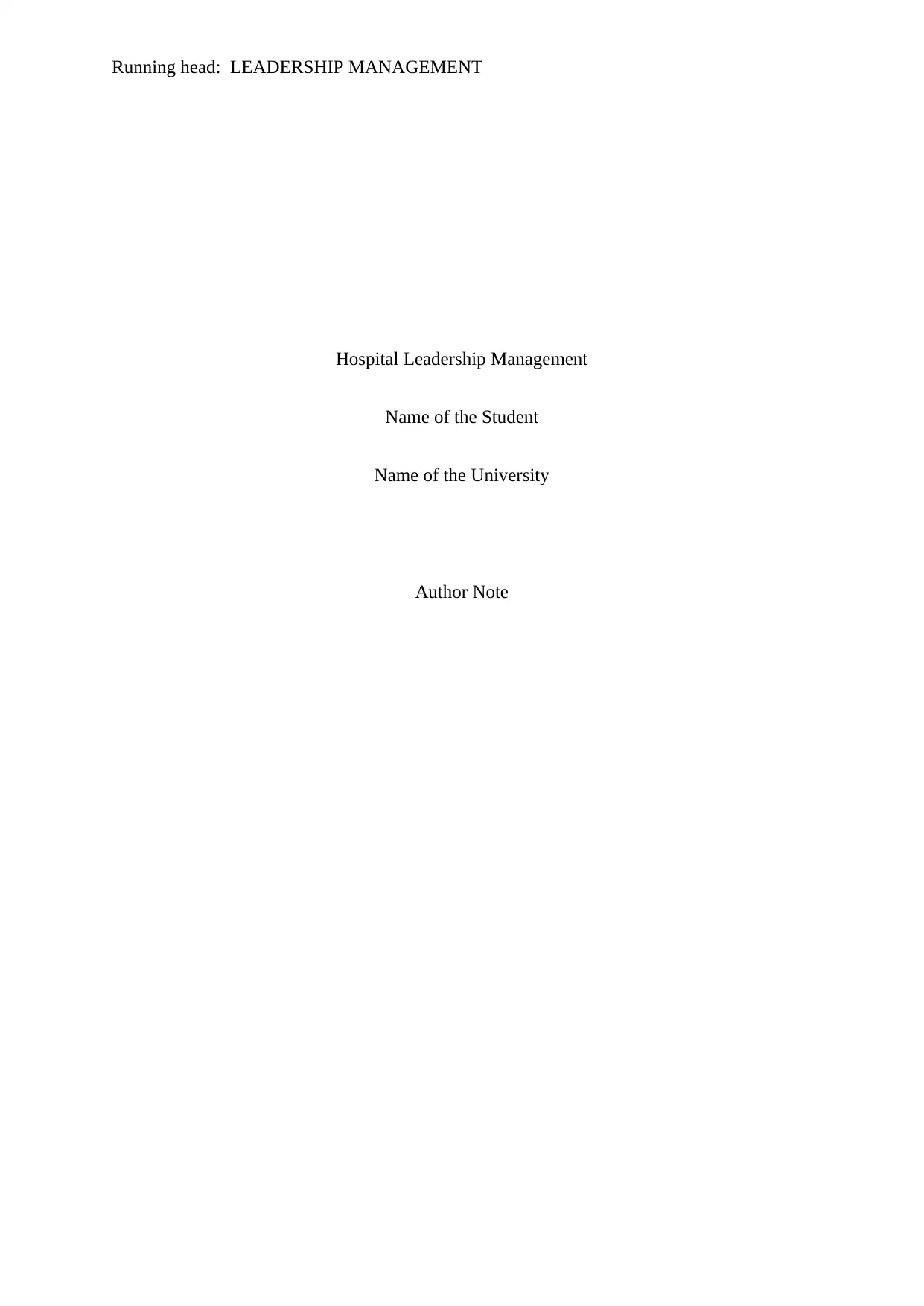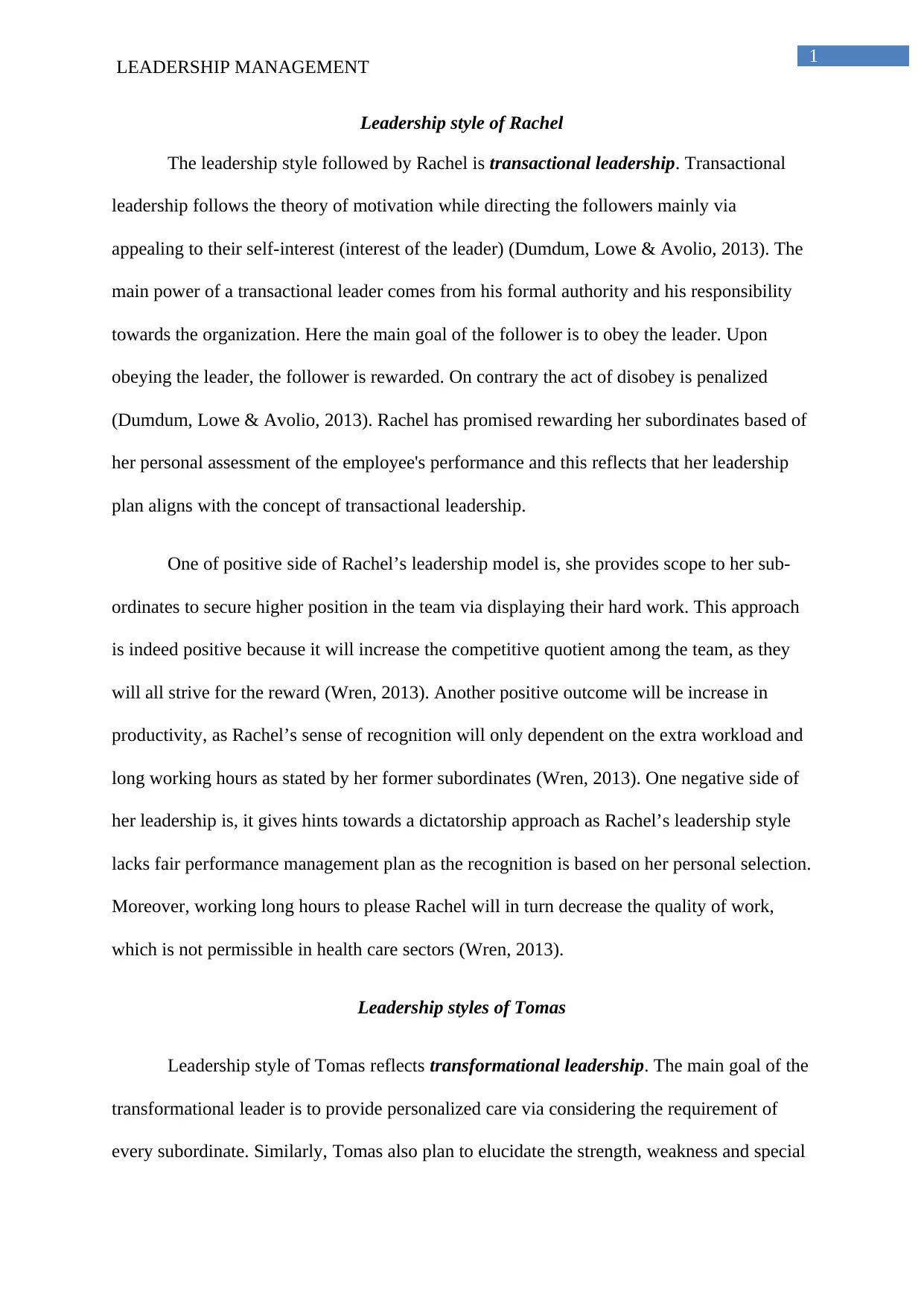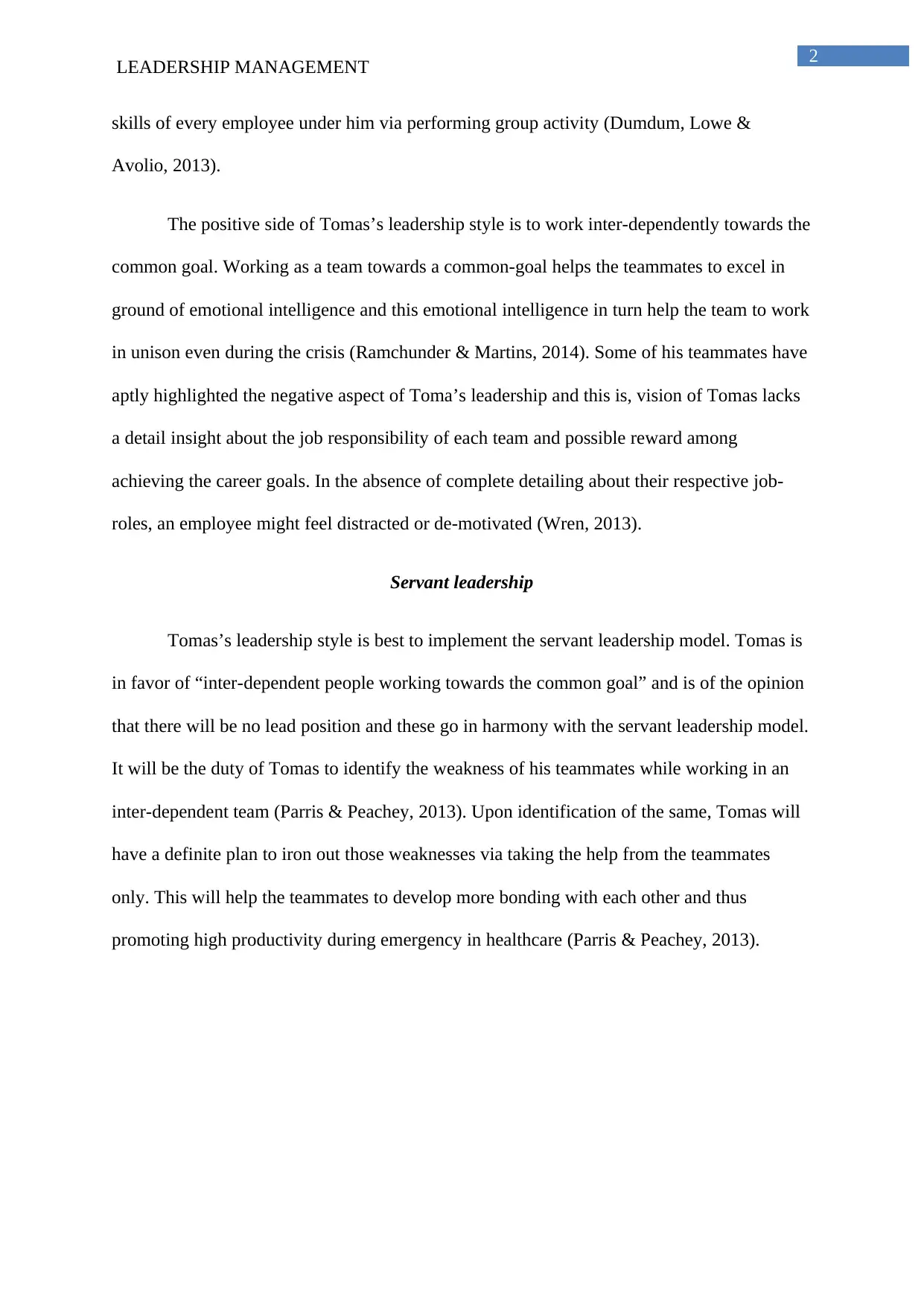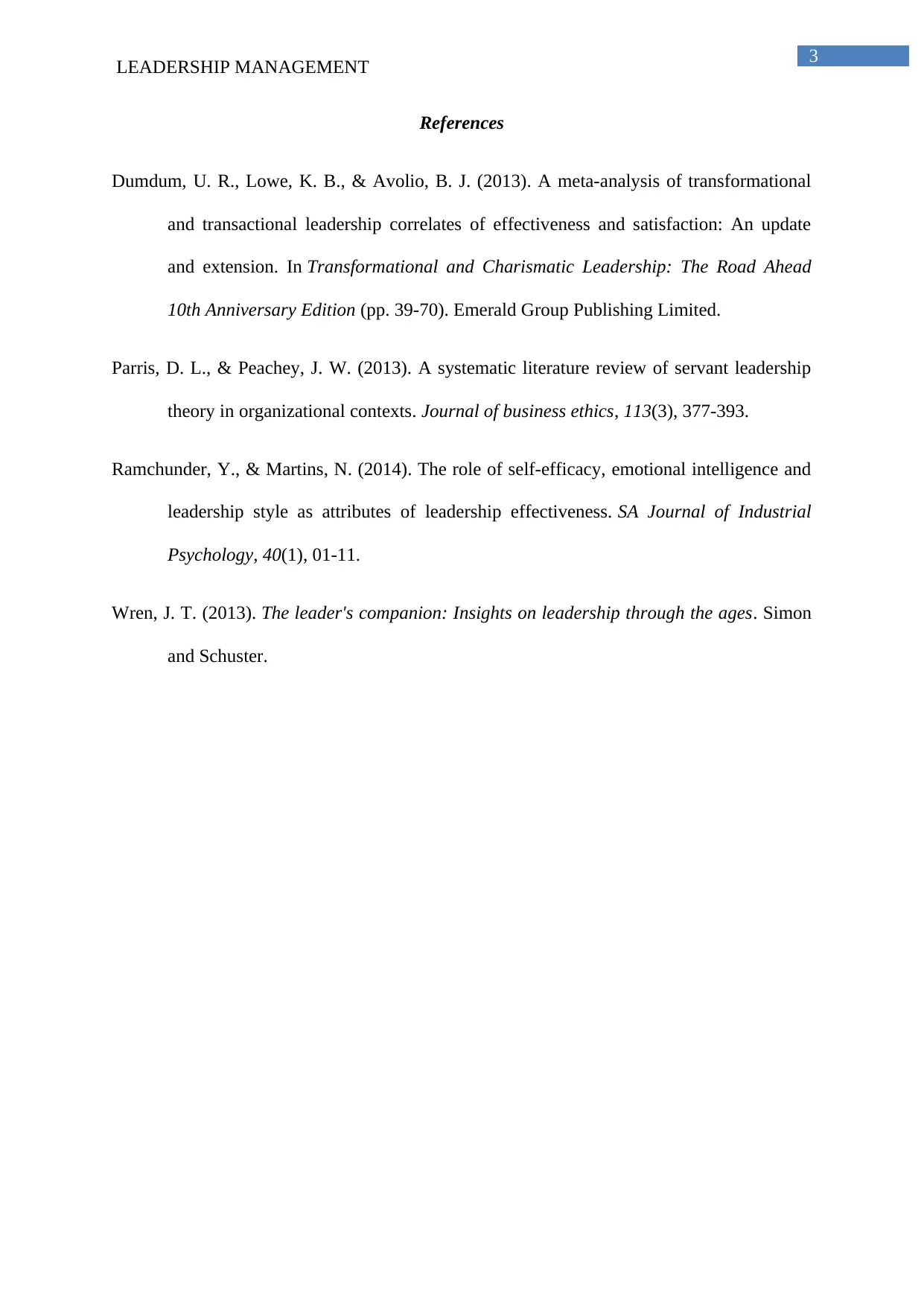Leadership Management: Analysis of Hospital Leadership Styles
VerifiedAdded on 2021/04/21
|4
|818
|39
Report
AI Summary
This report analyzes leadership styles within a hospital context, focusing on the leadership approaches of Rachel and Tomas. Rachel's leadership style is identified as transactional, emphasizing rewards based on performance, which can increase competition and productivity but may lack a fair performance management plan. Tomas's leadership style is transformational, aiming to understand individual employee strengths and weaknesses through group activities, aligning with servant leadership principles. The report highlights the positive aspects of each style, such as increased productivity and team cohesion, while also acknowledging potential drawbacks like a lack of detailed job roles and a potential for dictatorial approaches. The analysis includes references to relevant leadership theories and academic sources, providing a comprehensive overview of leadership dynamics in healthcare management.
1 out of 4









![[object Object]](/_next/static/media/star-bottom.7253800d.svg)